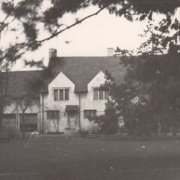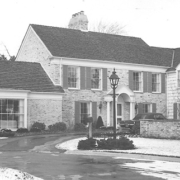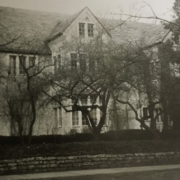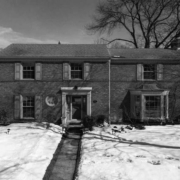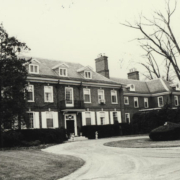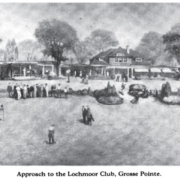Historical Architecture of Grosse Pointe – 234 Provencal
Last week we presented the work of Raymond Carey and the many fabulous homes he created in Grosse Pointe. Carey was a key figure in Grosse Pointe, creating prestigious homes for prominent clientele during the 1920’s – 1930’s. His work was extremely sought after. This week we take a more in-depth look at one of Carey’s projects, 234 Provencal. This sublime Tudor style home was created in 1929, for George Malvin Holley Sr. At one point Mr. Holley owned five homes in Grosse Pointe, two of which were designed by Raymond Carey.
Many of the homes Raymond Carey worked on in Grosse Pointe were created during the 1920’s and 1930’s. The majority were in his signature Georgian and Tudor Revival approach, including 234 Provencal. At its height of popularity in the 1920’s, Tudor Revival residences required skill by the architect to reproduce the typical characteristics in the right proportions to display the charm associated with this style. Given Carey’s skill in this approach, and the homes he was surrounded by growing up as a child in England, it is not surprising this style was particularly influential in the large English Country inspired residences he became known for.
234 Provencal, built in 1929, is approximately 8,122 square feet and is situated on a 100’ x 560’ lot. The property is reminiscent of an English Country Estate with superb craftsmanship and details, including the brickwork, limestone detailing around the doors and windows, along with subtle decorative additions across the exterior.
The property is constructed from solid stone with a slate roof, many of the rooms have tall leaded glass windows, which is a common trait of many English manor homes. As you would expect the interior is just as detailed as the exterior. The first floor features a slate floored vestibule and a grand oak paneled 16’ x 36’ foyer with ¾” pegged oak floors. The sunken oak paneled 19’ x 32’ sq ft living room also has pegged oak floors along with an impressive fireplace – as depicted in the photos below.
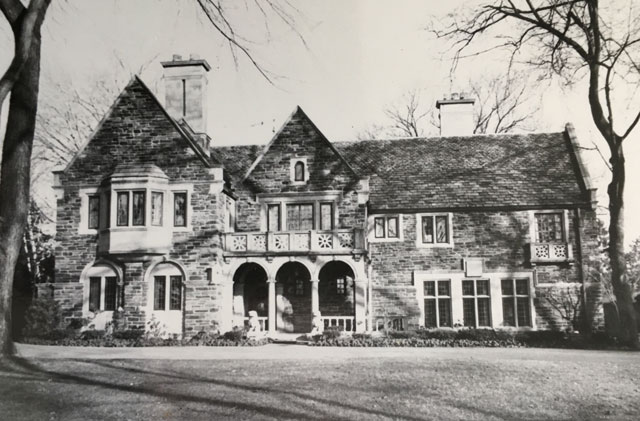
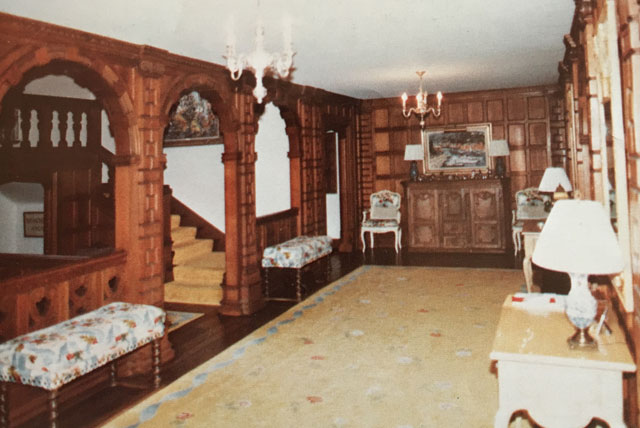
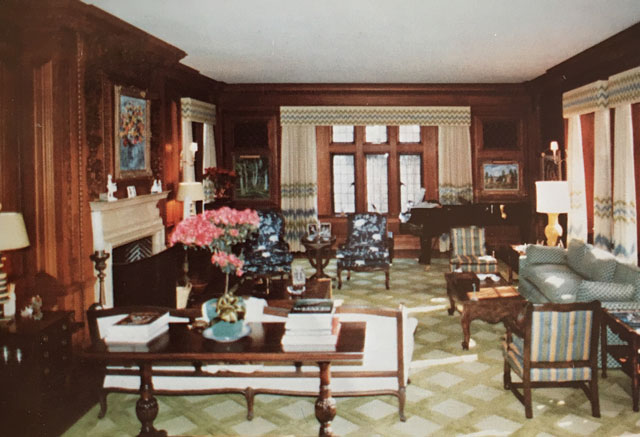
The 16’ x 16’ sq ft library is walnut paneled and has a fireplace. Also on the main floor is a 17’ x 19’ sq ft dining room, separate men’s, and women’s lavatories, two porches, along with a ‘cooking’ kitchen and an ‘eating’ kitchen It is reported the entire first floor was “skillfully designed for gracious entertaining”. On the second floor were four large bedrooms, including a 25’ x 19’ sq ft master suite, which also contained a natural fireplace and French doors leading to a balcony. The garage originally included a carriage house for the maids, with a living room, kitchen, two bedrooms and a bathroom.
According to our files the house was completely restored, improved, and redecorated in the late 1970’s. A 600,000 BTU furnace, 19-ton air-conditioning units, and a 500-amp electrical service were installed. A 16-station intercom system was also added, which featured a dog intercom outside. The garage was then updated with the main living area converted to a large open plan kitchen-living room during the remodel.
George M. Holley Sr. was a key figure of Holley family, who were prominent in Detroit during the first half of the 20th century. George Holley was born in Port Jervis, New York in 1878. Having graduated with a degree in automotive engineering and design Mr. Holley founded the Holley Motor Company with his brother Earl in 1899. Between 1902, and 1906, the company sold over 600 Holley Motorette automobiles. However, it was the design of a carburetor that brought the company a tremendous amount of success and recognition after their invention helped revolutionize gasoline engine development.
The Holley Motor Company ultimately became the world’s largest independent manufacturer of carburetors, supplying Ford, Pierce-Arrow, Winton, Oldsmobile, and Buick. Major companies also used Holley products in the production of motorcycles, racecars, farm vehicles, industrial engines, aircraft, and marine engines. George and Earle Holley were inducted into the Automotive Hall of Fame in 1995. George Holley Sr. was married to Margery Corliss Holley and together they had two children. He passed in 1963. Source: www.findagrave.com
Throughout his career Raymond Carey designed many beautiful homes. He was a talented man and was particularly adept at creating large-scale residences, and in doing so he left a little piece of England here is Grosse Pointe for us to enjoy.
*Photos courtesy of the Higbie Maxon Agney archives unless stated.
** Research, information, and data sources are deemed reliable, but accuracy cannot be fully guaranteed.
Written by Katie Doelle
Copyright © 2023 Katie Doelle


